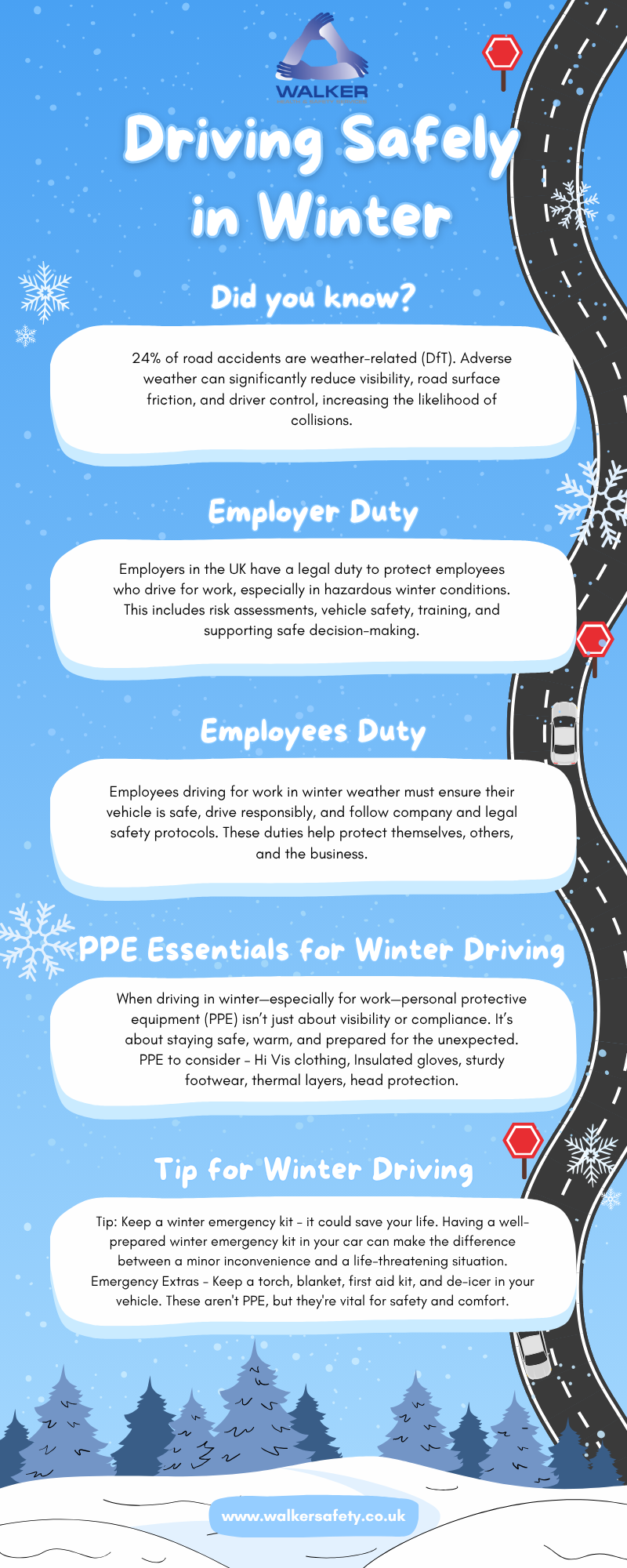Driving Responsibly
Employees must adapt their driving to winter hazards:
- Drive slowly and smoothly, avoiding sudden braking or acceleration.
- Increase following distances—up to 10 times longer on icy roads.
- Use headlights appropriately in poor visibility.
- Avoid distractions and stay alert to changing conditions.
- Follow designated routes and avoid risky shortcuts.
These behaviours align with health and safety law, which applies to work-related driving just as it does on-site.
Legal and Employer Expectations
Under UK law and employer policies, employees must:
- Comply with health and safety regulations while driving for work.
- Cooperate with employer safety measures, including training and risk assessments.
- Report incidents or near misses promptly.
- Follow journey plans and avoid unnecessary travel in severe weather.
Employers are required to manage road safety risks, but employees play a key role in executing those plans.
Emergency Preparedness
Employees should carry a winter emergency kit, especially for longer journeys:
- Torch, blanket, shovel, snacks, water
- Phone charger and de-icer
- High-visibility vest and warning triangle
This is particularly important for lone workers or those driving in rural areas.
When Not to Drive
If conditions are too dangerous, employees should:
- Inform their manager and delay travel.
- Avoid pressure to drive if they feel unsafe.
- Use alternative communication or remote work options if available.
Employers must support safe decision-making and not penalize employees for refusing to drive in hazardous conditions
